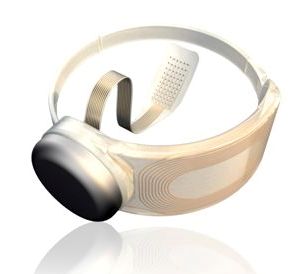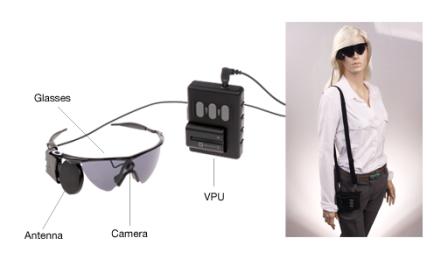First step to US FDA approval for Second Sight’s retinal implant
4 October 2012
The US FDA Ophthalmic Devices Advisory Panel has unanimously voted to recommend the Argus II Retinal prosthesis developed by Second Sight Medical Products, Inc.
Already approved for use in Europe, the device for the first time
ever, partially restores vision to patients who are blind due to
Retinitis Pigmentosa (RP).
“We are very pleased with the
panel recommendation today. The panel deliberations were well
informed and thorough and their decision validated over two decades
of work by Second Sight and our collaborators,” said Robert
Greenberg, MD, PhD, President and CEO of Second Sight. “We would
also like to thank all of the people around the world with Retinitis
Pigmentosa who volunteered to participate in our clinical trials,
and the doctors who treated them. Without their pioneering efforts,
today’s result would not have been possible.”
The recommendation came after more than 20 years of work in the field, US$200m of public and private investment, and 10 years after the first person received Second Sight's first Bionic Eye in the clinical trial of the first generation Argus I retinal implant which began in 2002.
How it works
The Argus II retinal prosthesis system uses a small video camera in a pair of glasses to capture an image. This image is sent wirelessly to the retinal implant attached to the eye. This has an electrode array that stimulates the remaining photoreceptors in the damaged eye.
The theoretical resolution of the image captured is high (TV NTSC). It delivers the image with 60 electrodes focusing electrical current to 50% of the nearly 1 million nerve cells in the retina. Because these cells have reorganized significantly during years of blindness, and a large proportion are not healthy, and some may not respond to electrical stimulation, the effective resolution is limited.

The Argus II 'epiretinal' implant, consisting
of an electronics case with antenna, that is wrapped around the
eyeball, and the electrode array that sends electrical impulses to
the retina

The external equipment consisting of glasses
and a video processing unit
The system restores 20 degrees of visual field (ie users see the world through an A4 size window at arm’s length). The measure of the effective resolution in ophthalmology is called visual acuity. The visual acuity of the best Argus II patients with the system today is 1.6%, just below the limit of legal blindness. In research tests, with the same implant, patients have reached 10%, just above the limit of legal blindness. Without the system they have 0% or “Bare Light Perception” ( barely able to see a photographic flash at point blank distance after 30 minutes in the dark ).
Proof of patient benefit
"While the European Approval last year was based on the safety and the long term performance of the Argus II Retinal Prosthesis System, the FDA panel required the demonstration of probable benefit as well. This recommendation will now give us the chance to improve the quality of life of thousands of blind patients who have absolutely no other treatment options", said Dr Lyndon da Cruz, MD PhD Consultant Retinal Surgeon at Moorfields Eye Hospital in London, UK who presented the international trial data to the FDA panel in Washington.
"The landmark nature of the moment was reflected by one of the largest FDA panels ever convened and there were numerous patients who had benefitted from the device giving moving testimonies of how the device had changed their lives.
"With seven patients treated in Moorfields Eye Hospital, the largest clinical site in the world, I am very proud to have participated in the world's biggest trial of any retinal implant, and that our research work in the NHS has been seminal in allowing blind patients around the world to get access to this unique and life-changing treatment.
"With both European and recommended US market approval of Second Sight's Argus II bionic eye an historical first has been achieved. We can now begin to see great hope in the future development of this field and the promise of restoration of sight for those who need it most".
Professor Paulo Stanga, Vitreoretinal Surgeon at Manchester Royal Eye Hospital and Director of the Manchester Vision Regeneration (MVR) Lab, UK, added, "In Manchester, we enrolled three subjects in this trial, and obtained some tremendous results. In further research, we have been able to demonstrate that patients blinded by retinitis pigmentosa could consistently perceive different colours at the same time using Argus II. This data is very encouraging because it suggests the possibility that Argus II with its software capability could be upgraded to one day restore colour vision for these blind patients."
"I think it's a terrific system, it's wonderful, it's changed my life. I just like to be part of something that does something for other patients with retinitis pigmentosa" said Keith from Manchester, user of the system since 2009, in a statement to the FDA panel.
"This is a truly exciting and historic moment for people with advanced inherited retinal degenerations such as retinitis pigmentosa," said Dr. Stephen Rose, chief research officer, Foundation Fighting Blindness, which helped get the project started with early support.
About retinitis pigmentosa
RP, an inherited retinal degenerative disease that often results in nearly complete blindness, affects roughly 200,000 Europeans and has been designated by the World Health Organization as an orphan disease. In 2011, the Argus II, which is intended to help the RP patients with complete blindness, received a CE Mark, making it the first approved treatment for severe retinitis pigmentosa anywhere in the world.
"We have seen a tremendous acceptance from the German and Italian government to bring Argus II to Retinitis Pigmentosa patients at no cost for patients, and we hope to see a similar level of support from England, France and other European countries", said Dr Gregoire Cosendai, head of Europe for Second Sight.